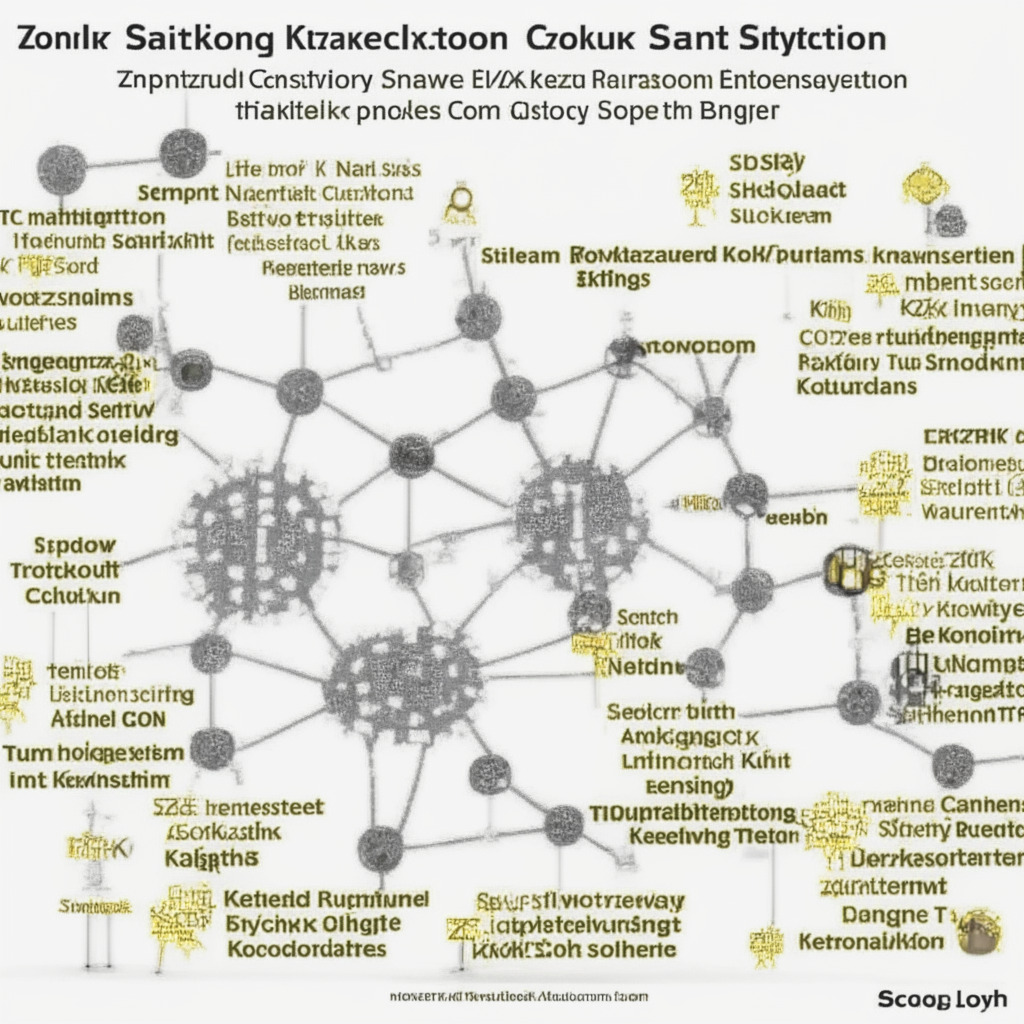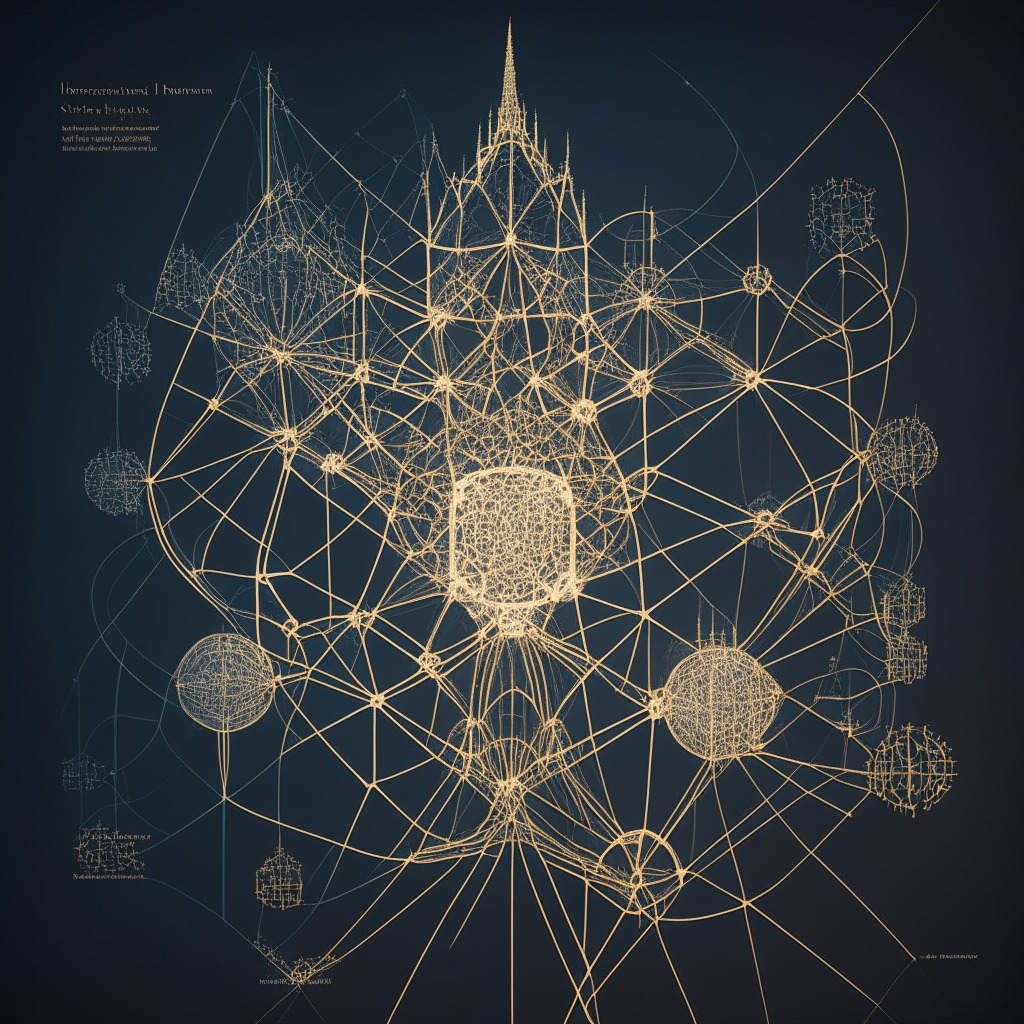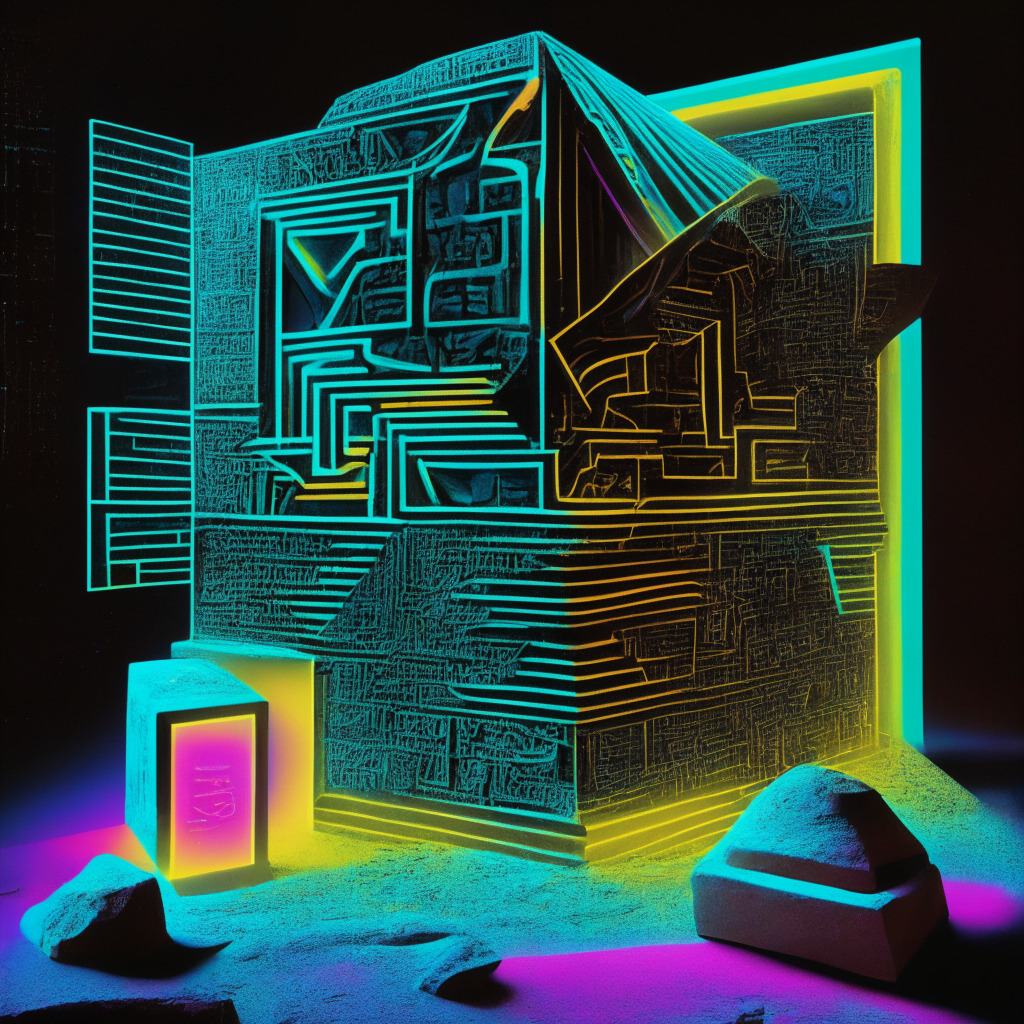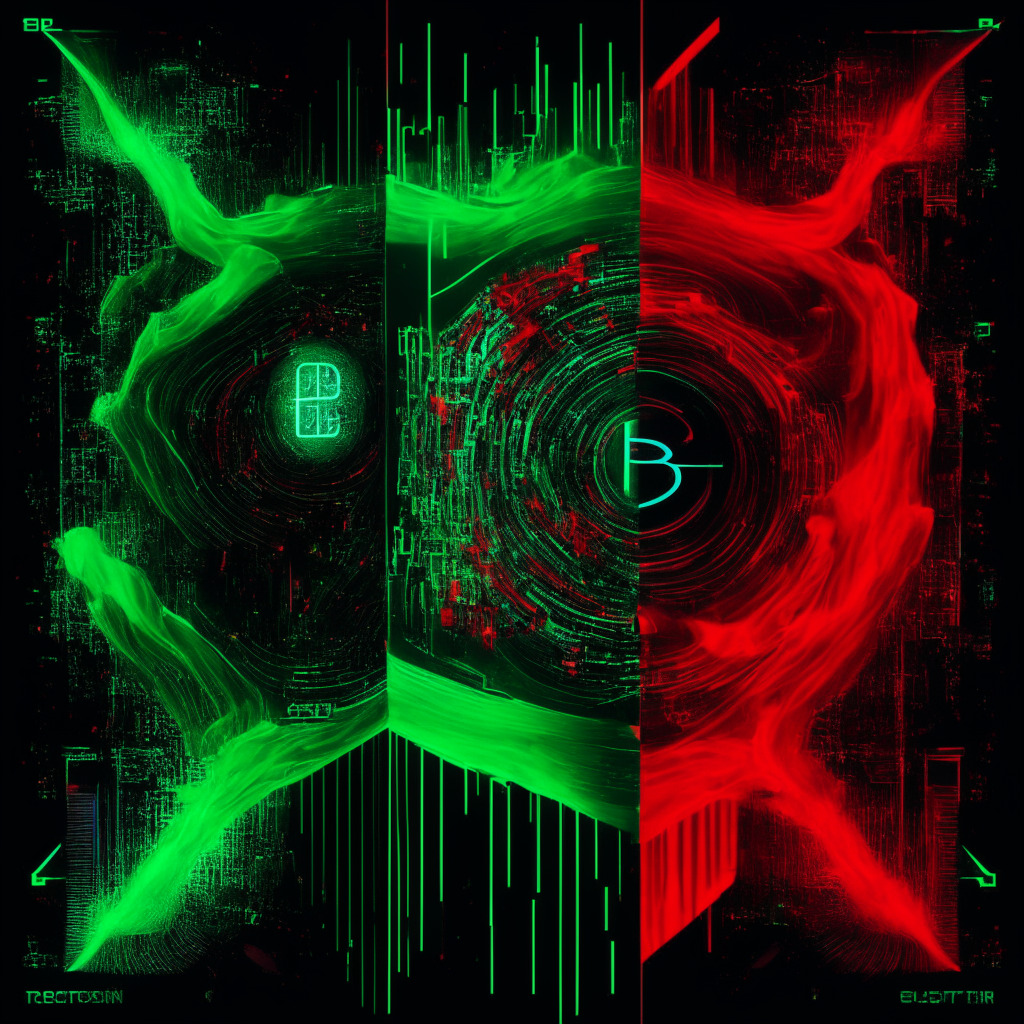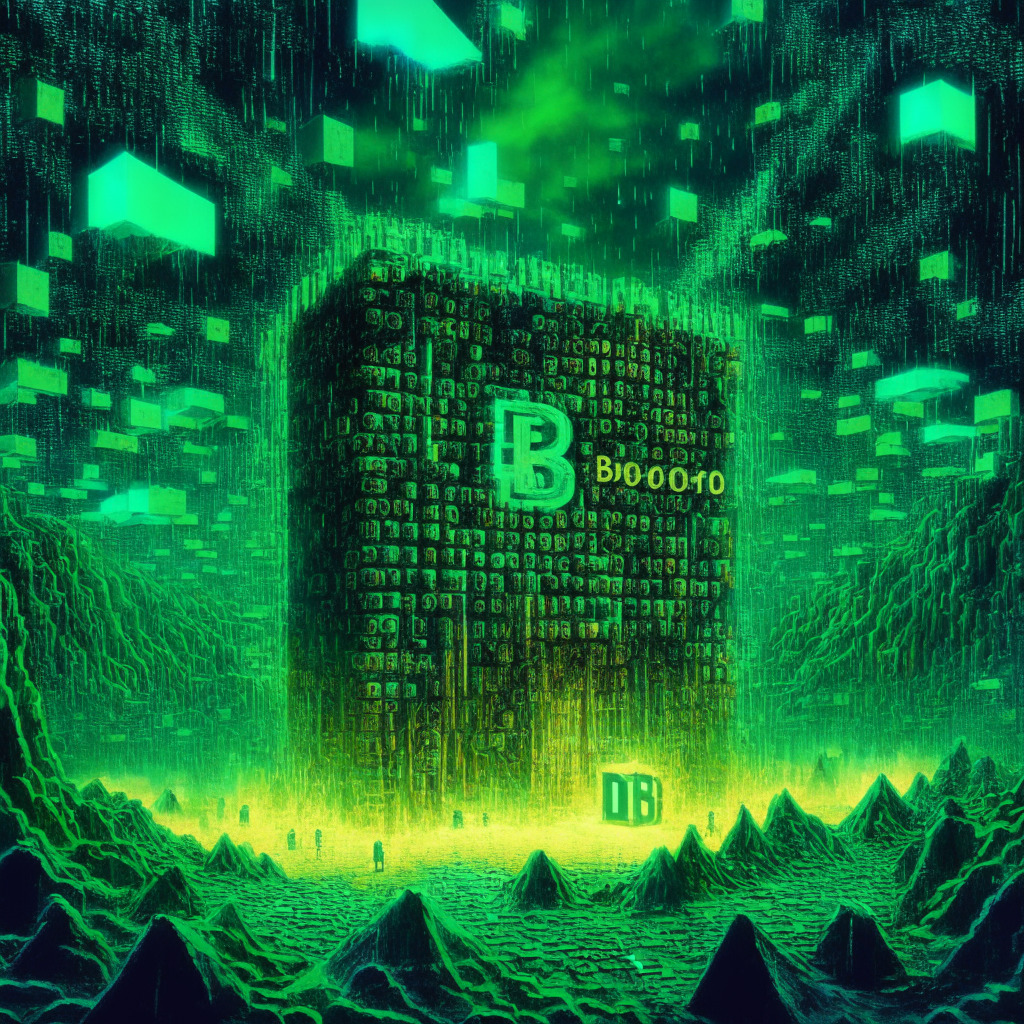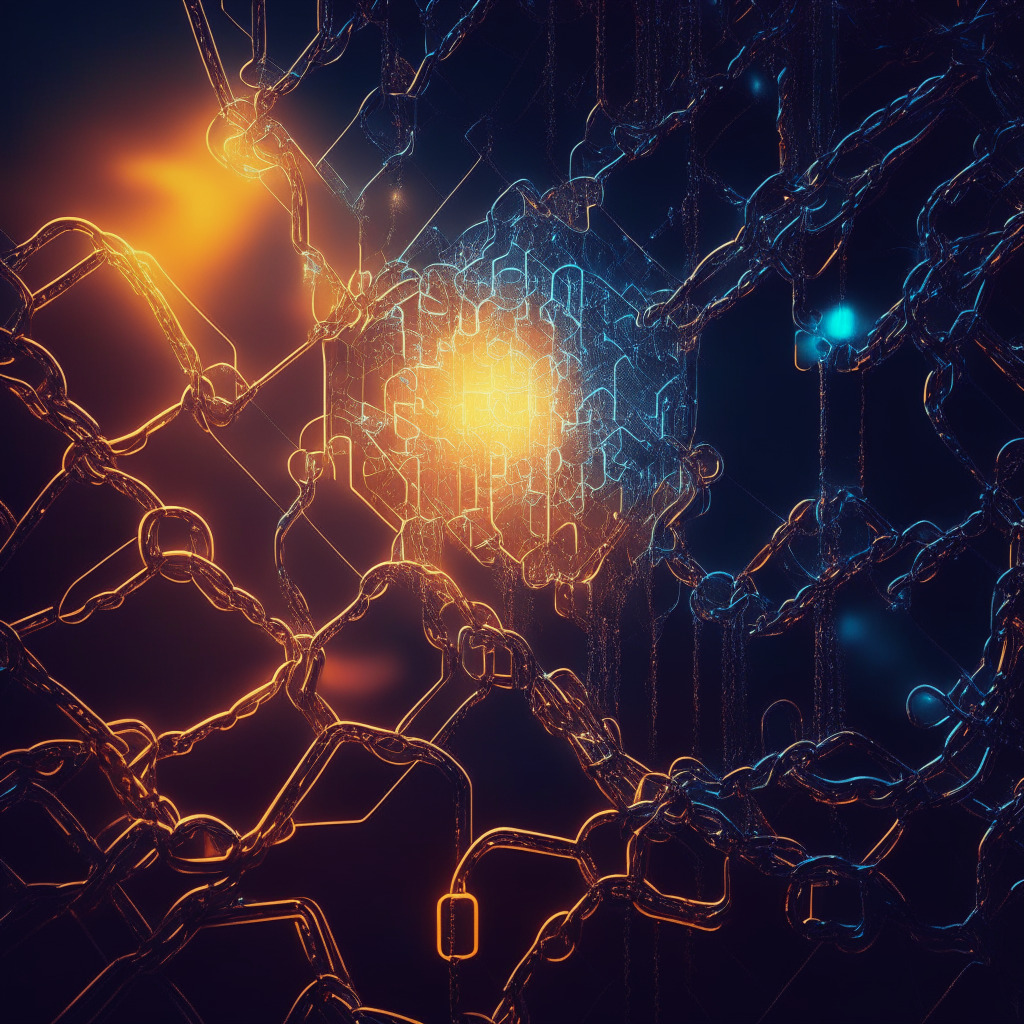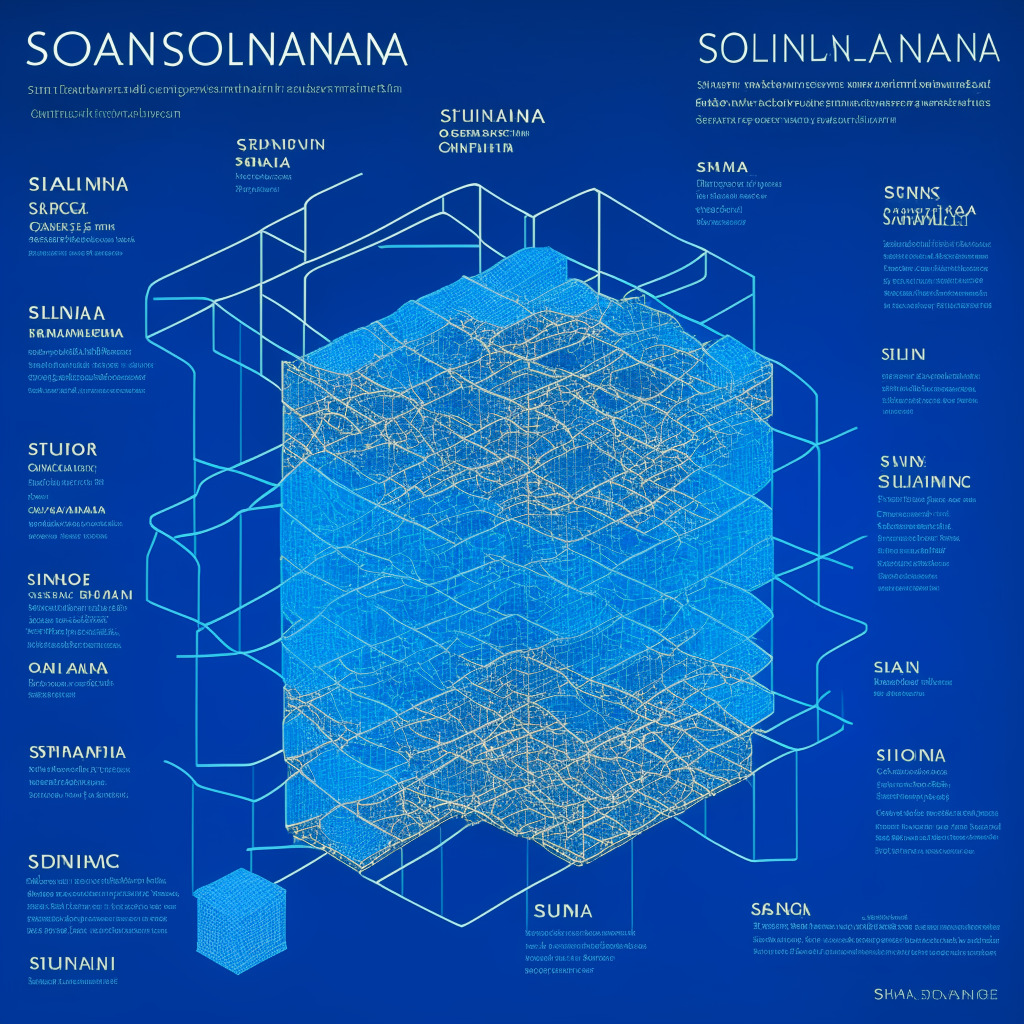A pivotal upgrade known as the Merge transitioned Ethereum from a proof-of-work (PoW) consensus mechanism to a proof-of-stake (PoS), causing a net supply decrease of 299,922.50 ether. The PoS mechanism needs users to hold ether to validate transactions and earn rewards. This eliminated much miner supply and made Ethereum more eco-friendly. However, despite these changes, ether’s market values have stagnated.
Search Results for: Proof of Work
Scaling Bitcoin With zk-Proofs: A Solution to Network Congestion and Transaction Fees?
The Bitcoin network faces congestion and increased transaction fees due to the demand for BRC-20 tokens. Zero-knowledge proofs (zk-proofs) may help address these issues by enhancing privacy, security, and blockchain capacity. Projects such as ZeroSync are exploring solutions like zkCoins to increase transaction throughput and improve network scalability.
Canadian Securities Administrators Unveil Interim Framework for Stablecoin Issuers: Ensuring Safety or Stifling Creativity?
“The Canadian Securities Administrators (CSA) has unveiled a framework to guide exchanges and issuers of stablecoins, aiming to enhance transparency and trust. The rules require stablecoin issuers to maintain sufficient reserves with a qualified custodian and disclose crucial platform information, underscoring the need for investor information and protection.”
Unraveling the Paradox of Increased Decentralization: The Optimism Network’s Stride and Binance’s Unexpected Move
The Optimism network has launched its testnet version of a fault-proof system aimed at increasing the efficiency and decentralization of the Superchain. Typically reliant on centralized sequencers, the new system offers modular options to prevent fraud. However, co-founder of Ethereum, Vitalik Buterin, asserts the importance of user-submitted fraud proofs to maintain true decentralization.
Chia Network’s Staff Reductions: Tackling Challenges in the Blockchain Odyssey
Chia Network’s announcement of workforce reduction despite plans for a US public listing underlines ongoing challenges in the blockchain industry. Despite an unstable market and underwriter issues, Chia remains committed to expanding its teams and operations, and to fostering enterprise adoption of its blockchain technology. Critics question the sustainability of Chia’s US-focused, global growth strategy.
Leased Proof-of-Stake: Game-Changer or Just Another Player in Blockchain Technology?
“Blockchain technology introduces Leased Proof-of-Stake (LPoS), an innovative mechanism aimed at overcoming crypto mining complications. LPoS allows tokenholders to lease their tokens to validator nodes, improving their chance at generating new blocks and sharing transaction fees. While offering benefits such as decentralization and fixed tokens, LPoS also maintains control by restricting trade or transfer of leased tokens.”
A Fresh Hope: The Resurgence of Holesky Test Network and Ethereum’s Future Prospects
The resounding success of Ethereum’s second attempt to establish the Holesky test network addresses scalability concerns. Holesky accommodates 1.4 million validators, twice as many as Ethereum. It is predicted to contribute significantly in introducing the Dencun hardfork and further outpace Ethereum’s competitors.
Bitcoin Ordinals, the Invisible Friend or Foe? Unraveling their Impact on Network Congestion and Market Dynamics
“Ordinals, a method of registering digital content on the Bitcoin network, are seen as disruptive by some. However, analytics firm Glassnode finds little proof that they’re causing network congestion. Despite concerns, these bitcoin ‘pocket fillers’ seem to coexist with other money transfers, leveraging cheap block space without greatly impacting transfer volumes.”
Gaming Revolution via Blockchain: Proof of Play’s $33M Gamble: Rewarding or Risky?
“Farmville co-creator, Amitt Mahajan, backed by Proof of Play, has secured $33M to develop Web3 games, aiming to revolutionize the gaming sector with blockchain technology. The venture aims to facilitate smooth gameplay and promote decentralization but faces potential complexities and risks of emerging technology.”
Unearthing the Past: Zero-Knowledge Proofs, Hal Finney, and the Future of Blockchain
A rediscovered video of early Bitcoin pioneer, Hal Finney, discussing zero-knowledge proofs, a cryptographic principle now integral to blockchain technology, provides insight into the early workings of Bitcoin and Satoshi Nakamoto. Finney’s contribution to privacy-enhancing technologies, including the anonymous email system and Proof of Work system, underpin today’s blockchain infrastructure.
Ethereum’s Proof-of-Stake Transition: A Year in Review and a Look into the Future
“Ethereum transitioned to the proof-of-stake system reducing power consumption by over 99% and making the network economically deflationary. However, anticipated price surge due to deflationary pressure hasn’t materialized swiftly. Liquid staking providers control significant amounts of staked Ether, raising potential centralization concerns.”
Navigating the Twisty Paths of Lightning Network: Routing Attacks, Threats and Measures Against Them
Safeguarding assets from routing attacks is crucial in the crypto ecosystem, particularly for the Lightning Network. These attacks exploit network vulnerabilities for personal gain and can undermine network efficiency. However, preventive measures are in place, including network surveillance tools, diligent upgrades, diversified channels, and community participation to enhance security. Users must maintain vigilance and understand the risks and safeguards.
Ethereum’s New Holesky Testnet: A Step Towards Optimized Network Scalability and Enhanced Testing
Ethereum is set to unveil a new testnet, Holesky, which promises larger capacity than its existing networks, Sepolia and Goerli. The new testnet aims to address potential scaling issues and accommodate more extensive testing for Ethereum’s growing developer community. Named after a Prague train station, Holesky’s significant size would provide a realistic environment for infrastructure and core protocol upgrade testing, targeting to enhance Ethereum’s resilience against unexpected obstacles.
Manta Network’s Leap Forward: Gains and Regulatory Risks in Layer 2 Solutions
“Manta Network has launched its zero-knowledge proof layer 2 scaling network, an innovative platform for ZK-enabled DApp development. This introduces increased throughput and reduced gas fees, promising future DApps realm expansion. However, challenges and regulatory issues, as highlighted by the Celsius incident, suggest the need for careful navigation in blockchain tech.”
Ethereum’s Lower Network Activity: A Sign of Successful Scaling Solutions?
Ethereum’s gas fees have hit an 8-month low due to low network activity, yet layer-2 scaling solution popularity is on the rise. This indicates the vital role of scaling solutions in maintaining low fees even amidst growing decentralization. Notably, Ethereum 2.0 and layer-2 solutions seem to alleviate the issue of high adoption against expensive gas fees and slow transaction times. Ethereum’s evolving technology is making it increasingly invincible, even against rival blockchain platforms.
Breaking Boundaries with Zero Knowledge Proofs: Andreessen Horowitz’s Lasso and Jolt Projects Unveiled
Andreessen Horowitz recently unveiled two innovative open-source projects, Lasso and Jolt, centered around zero-knowledge proofs – a robust form of cryptography. These initiatives aim to enhance transaction speed, cut costs, boost privacy, and empower external developers, introducing new opportunities to scale blockchain networks.
Decoding the Andrew Horowitz Bet on ZK Proofs: Unlocking Blockchain’s Future or Unlocking Concerns?
Venture capital firm Andreessen Horowitz (a16z) is investing in the development of zero-knowledge (ZK) proofs and open-source software projects, Lasso and Jolt, aiming for scaling blockchains while preserving transaction privacy. These technological advancements may transform blockchain’s scalability and privacy, but could also introduce new vulnerabilities and challenges.
The Lifeline of Dogecoin: How Litecoin’s Network Security Saved the Meme Cryptocurrency
“Charlie Lee, creator of the Litecoin blockchain, helped rescue Dogecoin in 2014 with a “merged mining” agreement, effectively utilizing Litecoin’s network security. This historical connection between Litecoin, Bitcoin, and Dogecoin illustrates how “proof-of-work” systems mutually secure each network, adapting in crises – a core attribute of cryptocurrency markets.”
Unveiling a Tamper-Proof Future: The Revolution of Data Security in Blockchain with Zero-Knowledge Proof
“Space and Time, a decentralized Web3 data service, has launched a tool powered by Zero-knowledge proof technology for SQL queries. The company’s Proof of SQL ensures data integrity in its decentralized network, enhancing data security for retail, finance, gaming, and blockchain-based solutions.”
Unraveling the Mystery of Zero-Knowledge Proofs: A Double-Edged Sword in Crypto Privacy
“Zero-knowledge proofs (ZK-proofs), cryptographic protocols that authenticate transactions without disclosing specifics or user identities, play a significant role in improving the privacy and scalability of cryptocurrency transactions. However, aspects like verifying protocol, potential security flaws and facilitating illegal activity present challenges to their wide adoption.”
Unmasking Worldcoin: The Human-AI Interface and the Quest for Proof-of-Personhood
Worldcoin, a new crypto project, operates on the principle of proof-of-unique-personhood to prevent deep-fake bots. Despite rapid engagement, concerns about potential Orwellian surveillance and exposure of sensitive biometric data have arisen. Advocates argue that the collected data is converted to untraceable hash codes and no raw human data is stored. Ethereum founder Vitalik Buterin underscored the risk of centralized models not fully safeguarding data.
Ethereum’s Switch to Proof-of-Stake: A Sustainable Step or a Misdirected Move?
“Ethereum’s shift from proof-of-work to proof-of-stake, known as the “Merge”, is viewed differently by stakeholders. While the move reduced Ethereum’s energy demands and is hailed as a ‘green’ shift, it overlooks the ongoing significant energy consumption from graphics processing units previously used in mining. Moreover, perspectives on security and profitability under the new system remain contentious.”
Unveiling the Milestone of 800,000th Bitcoin Block: Impact on Network Security and Energy Consumption
“Recently, the Bitcoin network reached a significant milestone – achieving the mining of the 800,000th block. This event is seen as a testament to the network’s resilience and security strength. However, questions regarding network’s high energy consumption and the implications of future block reward halving events make the situation complex.”
Merging AI and Zero Knowledge Proofs: Skyrocketing Blockchain’s Future or a Risky Endeavor?
“Blockchain technology combines with zero-knowledge proofs (ZK-proofs) and AI for improved smart contract solutions. Despite challenges, experts remain optimistic about its future. Integration of ZK-proof with AI hints at a transformative occurrence that continues shaping blockchain’s promising future.”
Exploring ZK Proofs: Privacy Panacea or Another Layer of Web Complexity?
“ZK proofs, or zero-knowledge proofs, are cryptographic measures that could solve internet users’ privacy concerns. They secure data from the onset, only revealing essential aspects, potentially reshaping the internet framework. However, they may also add to the complexity of online security measures.”
Unveiling Marinade Native: Revolutionizing SOL Staking on the Solana Framework
“Marinade Finance, within the Solana framework, is set to provide staking capabilities for SOL tokens. The “Marinade Native” initiative allows investors bypass the process of exchanging SOL for liquid staking tokens (LSTs), thereby mitigating smart contract risks while ensuring yields. It also guarantees that investors retain full custody of their SOL tokens.”
Scaling the Borders of Financial Freedom: Shinhan Bank Tests Stablecoin Remittances on Hedera Network
Shinhan Bank, a South Korean banking titan, completed a successful test for stablecoin remittances on Hedera’s network, allowing real-time, instantaneous settlement and foreign exchange rate integration across three currencies. This process decreases complexities and cost for cross-currency transactions, offering a solution to high intermediary bank charges in current financial structures, especially with cross-border transfers.
Rapid Scaling of Ethereum: Harnessing the Power of ZK-Proofs and the Challenge of Off-chain Computations
“The Ethereum ecosystem is encouraging competition, with many firms developing Zero-Knowledge Scaling solutions. This technology enables secure off-chain computations and only light, non-data-revealing proofs on the Ethereum mainnet. Despite its efficiency, questions arise about the sustainability and security of off-chain transaction computations.”
Bolstering Blockchain: The Integration of ZK Proofs in Cryptographic Technologies
This article discusses the partnership between Paris-based =nil; Foundation and Fabric Cryptography as they work together to enhance cryptographic technologies and accelerate the deployment of zero-knowledge (ZK) proofs – a cryptographic procedure with substantial privacy-preserving attributes. They aim to overcome barriers in computation, making ZK proofs more functional for digital transactions, cloud services and privacy applications.
Chainlink’s Proof-of-Reserves: True Transparency or Illusion of Accountability?
Chainlink’s proof-of-reserves service promises to allow crypto custodians to directly monitor real-world assets on blockchains, increasing safety and transparency for DeFi users. However, the durability of this solution is questioned as the credibility of data depends on the source, possibly masking inadequate accounting practices and reinforcing trust issues in centralized entities.
Mind Network: A New Hope for Web3 Data Security and User Privacy
“Mind Network, a platform aimed at improving web3 data security and privacy, has raised $2.5 million in seed funding. The company provides end-to-end encryption for users, ensuring autonomy over personal data and financial transactions. The funds received will be directed towards enhancing technology, fostering adoption across sectors, and strengthening data privacy and ownership for global users.”
GPU Shortage as a Catalyst for Web3: How Decentralized Infrastructure Networks Benefit AI Startups
The GPU shortage could accelerate the adoption of Web3 by mainstream thanks to decentralized physical infrastructure networks (DePIN). Protocols like Akash, enabling GPU leasing to AI start-ups, and Arweave, offering permanent data storage, could help alleviate resource issues. DePIN could provide inexpensive, reliable infrastructure for startups, shielding them from AI threats and offering advantages over Web2.

